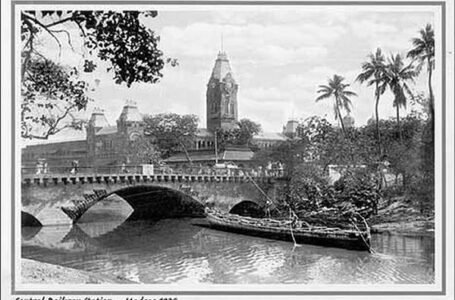Amazing Discoveries and Their Founders: Famous British Chemists

-Bhoomee Vats
Chemistry is not just a branch of science that studies chemicals, but it is also an important field that explores human progress and, above all, the understanding of the natural world. From minor household tasks to major national inventions, chemistry plays a huge role in our everyday lives, and hence, it is difficult to separate it from our daily activities. Different nations have contributed to this field and influenced people through their ideas and discoveries. One such nation is Britain, which has very deeply influenced the scholars of this field due to its long journey of curiosity, ideas, and discoveries.
Even though the Industrial Revolution was still very far away, in the 18th century, England saw the Neoclassical age. This age is mainly known for its technological advancements and the shift in people’s beliefs from religion towards science. This age of intellectual and scientific curiosity indirectly laid the groundwork for future technological progress, even in chemistry. This age saw a rise in the discovery of crucial chemicals, including the identification of new elements and a better understanding of chemical reactions. The following are some of the major British chemists whose works were revolutionary for the field:
- Dorothy Crowfoot Hodgkin– Dorothy Hodgkin was born on May 12, 1910, in Cairo, Egypt, and was an English chemist whose determination of the structure of penicillin and vitamin B12 brought her the 1964 Nobel Prize for Chemistry. By 1945, Dorothy succeeded in solving the structure of penicillin, describing the arrangement of its atoms in three dimensions. Her work on penicillin was eventually recognized by her election to the Royal Society, Britain’s important scientific academy, in 1947, only two years after a woman had been elected for the first time. In the mid-1950s, Hodgkin discovered the structure of vitamin B12 by extensively using computers to carry out the complex computations involved. These achievements of hers led to her election in 1960 as the first Wolfson Research Professor of the Royal Society, which was a post she held while staying at Oxford. Nominated more than once for the Nobel Prize, she won in 1964 for her work on penicillin and vitamin B12. The next year, she was made a member of the Order of Merit, Britain’s highest honour for achievement in science, the arts, and public life.
- Edward Frankland- Sir Edward Frankland was born on January 18, 1825, in Churchtown, Lancashire, England, and was an English chemist who was one of the first examiners in the field of structural chemistry. He was the first professor of chemistry at Owens College, Manchester (1851), and took the role of professor of chemistry at the Royal Institution of Great Britain, London (1863), succeeding Michael Faraday. In 1865, he began 20 years of service at the Royal School of Mines. It was in 1850 when he began his research, which led him to the idea that an atom of an element can combine only with a certain limited number of atoms of other elements. Therefore, he established the theory of valency (1852), which became a fundamental element of modern structural chemistry. He was appointed a member of the second royal commission on the pollution of rivers (1868), and highlighted an enormous amount of information on the contamination of rivers and water purification. In 1868, he joined with Joseph Norman Lockyer in the experiments that led Lockyer to find the existence of helium in the Sun’s atmosphere.
- Rosalind Franklin- Rosalind Franklin was born on July 25, 1920, in London, England, and was a British scientist whose contributions to the discovery of the molecular structure of deoxyribonucleic acid (DNA), a constituent of chromosomes that serves to encode genetic information, shook the world of science. Franklin also contributed to the studies regarding the structure of viruses, helping to lay the groundwork for the field of structural virology. When she started with her research at King’s College, not much was known about the chemical makeup or structure of DNA. But her work helped to soon discover the density of DNA and, more importantly, establish that the molecule existed in a helical structure. Going forward, she worked to make clearer X-ray patterns of DNA molecules, helping to lay the foundation for the work of James Watson and Francis Crick, who in 1953 suggested that the structure of DNA is a double-helix polymer, which is a spiral consisting of two DNA strands wound around each other. Franklin gave all her hard work and devotion to her discoveries, and all her work proved fundamental in the field of science. Her experiments in cutting-edge DNA research were affected by her early death due to cancer in 1958. While Rosalind’s brilliant illumination and critical data analysis went largely uncredited and unnoticed, they still hold a significant place in the realm of science.
Conclusion
These chemists are a prime example of hard work and devotion, especially women who dared to step into a male-dominated field when it was very difficult to do so. From the groundbreaking discoveries of Hodgkin to the devotion of Franklin, these British chemists laid the groundwork for many future discoveries in the field of science. This history of British chemistry stands as an example of the power of human curiosity and the pursuit of knowledge. These works did not just magically appear in one day, but were a result of centuries of dedication towards the unique ideas and experiments.
Through this journey of British chemistry, we realize that curiosity is always good for the development of our intellectual growth. The work of these chemists continues to inspire new generations of scholars to ask questions, challenge traditions, and seek out and follow their curious thoughts. Knowing about these pioneers of science help us reflect on the field of science as a tradition and makes it clearer to us that the story and evolution of British chemistry is not just about the development in the field of science but also about the human devotion and spirit of exploration.


